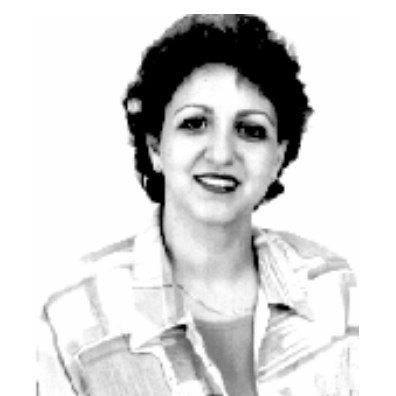International Journal of Image, Graphics and Signal Processing (IJIGSP)
IJIGSP Vol. 4, No. 10, 28 Sep. 2012
Cover page and Table of Contents: PDF (size: 392KB)
Contribution to the Fusion of Biometric Modalities by the Choquet Integral
Full Text (PDF, 392KB), PP.1-7
Views: 0 Downloads: 0
Author(s)
Index Terms
Multimodal biometrics, Fuzzy measure, Data fusion, Choquet integral, Biometric authentication
Abstract
In multimodal biometrics, modalities can be robust against the authentication of certain people and weak for others. The conventional fusion techniques such as the Product, Mean, AND, OR and the Majority Voting do not take into account this kind of behaviour. In this paper, we propose a new approach to fusion procedures in the context of biometric authentication. The proposed method is based on the exploration of the Choquet integral that takes into account the interactions between the terms and people through fuzzy measures. The fuzzy measures, the ones we have proposed, are based on the number of confusion, the entropy and the uncertainty function. The results have been validated in two databases: the first one is virtual, which is based on synthetic scores and the second one on the biometric modalities which are: face, off-line handwriting and off-line signature. The achieved results demonstrate the robustness of our approaches and their adaptability.
Cite This Paper
Anouar Ben Khalifa,Najoua Essoukri BenAmara,"Contribution to the Fusion of Biometric Modalities by the Choquet Integral", IJIGSP, vol.4, no.10, pp.1-7, 2012. DOI: 10.5815/ijigsp.2012.10.01
Reference
[1]Aguilar J., Garcia J., Rodrigez J., “Fusion strategies in multimodal biometric verification,” ICME’03, part 3, pp. 5-8, 2003.
[2]Ben Khalifa, A., Essoukri Ben Amara, N., “Exploration of the Choquet integral for the fusion of biometric modalities,” IEEE International Multi-Conference on Systems, Signals and Devices (SSD), pp. 1-6, 2012.
[3]BenKhalifa A., Essoukri BenAmara N., “Bimodal biometric verification with different fusion levels,” International Multi-Conference on Systems, Signals & Devices, Djerba, Tunisia, pp. 1-6, 2009.
[4]Ben Khalifa A., Essoukri Benamara N., “Fusion at the feature level for person verification based on off-line handwriting and signature,” IEEE SCS, Hamammet Tunisie, pp. 1-6, 2008.
[5]BenAmara N.E., “Contribution à la reconnaissance optique de l’écriture arabe,” rapport de synthèse, Habilitation universitaire, 2004, Université de Tunis.
[6]Choquet G., Théorie des capacités. 1953.
[7]Dugelay J.L., Perronnin F., “Introduction à la biométrie Authentification des individus par traitement Audio Vidéo,” Revue traitement du signal, vol19, n°4, pp. 253-256, 2002.
[8]Femila M.D., Irudhayaraj A.A., “Biometric system,” 3rd International Conference on Electronics Computer Technology, pp. 152-156, 2011.
[9]Gazzah S., Ben Amara N.E., “Neural networks and support vector machines classifier for writer identification using arabic script,” The International Arab Journal of Information Technology ( IAJIT), vol. 5, n° 01, pp. 92-101, 2008.
[10]Grabisch M., “The application of fuzzy integrals in multi criteria decision making,” European journal of Operational research, pp. 445-467, 1996.
[11]Grabisch M., “A new algorithm for identifying fuzzy measures and its application to pattern recognition,” International Conference on Fuzzy Systems, pp. 145-150, 1995,
[12]He Q., Chen J.F., Yuan X.Q., Li J., “Choquet fuzzy integral aggregation based on G-Lamda fuzzy Measure,” International conference on wavelet analysis and pattern recognition, pp. 98-102, 2007.
[13]Kwak K., Pedrycz W., “Face recognition: A study in information fusion using fuzzy integral,” Patter Recognition Letter, 26, pp. 719-733, 2005.
[14]Lin W.C., Hunang C.S., Huang W.C., “Combined multiple SVM classifiers based on Choquet integral with respect to L-measure,” International conference on machine learning and cybernetics, pp. 3188-3193, 2009.
[15]Melki A., “Système d’aide à la régulation et évaluation des transports multimodaux intégrants les cybercars,” Thèse doctorat, l’Ecole Centrale de Lille, 2008.
[16]Phillips P.J., Wechsler H., Huang J., Rauss P., “The FERET database and evaluation procedure for face recognition algorithms,” Image and Vision Computing, Vol. 16, No. 5, pp. 295-306, 1998.
[17]Ross A., Jain A., Qian J., “Information fusion in biometrics,” Pattern recognition letters, vol 24, issue 13, pp. 2115-2125, 2003.
[18]Ross A., Jain A., Prabhakar S., “An introduction to biometric recognition,” IEEE transactions on circuits and systems for video technology, Vol. 14 No 1, pp. 4-20, 2004.
[19]Schouten B., Jacobs B. “Biometrics and their use in e-passports,” Image and Vision Computing, Volume 27, Issue 3, pp. 305-312, 2009.
[20]Sugeno M., “Fuzzy measures and fuzzy integrals – A survey,” in fuzzy Automata and decision processes, pp. 89-102, 1977.
[21]Visani M., Vers de nouvelles approches discriminantes pour la reconnaissance automatique de visages, Thèse doctorat, Institut national des sciences appliquées de Lyon. Ecole doctorale informatique et informatique pour la société. 2005.
[22]Wang X., Wang X.J., “A new methodology for determining fuzzy densities in the fusion model based on fuzzy integral,” International conference on machine learning and cybernetics, pp. 2028-2031, 2004

